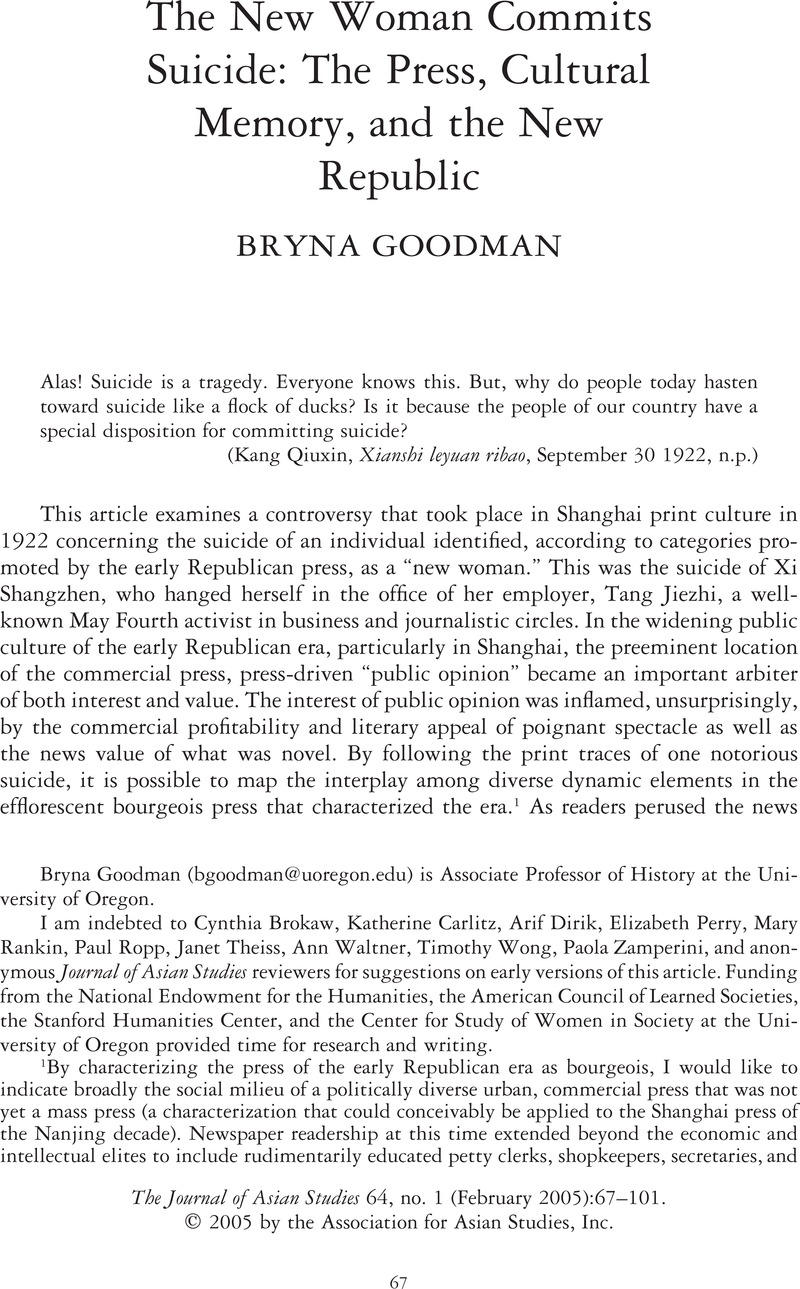Crossref Citations
This article has been cited by the following publications. This list is generated based on data provided by Crossref.
Carroll, Peter J.
2006.
Fate-Bound Mandarin Ducks: Newspaper Coverage of the "Fashion" for Suicide in 1931 Suzhou.
Twentieth-Century China,
Vol. 31,
Issue. 2,
p.
70.
Goodman, Bryna
2006.
Appealing to the Public: Newspaper Presentation and Adjudication of Emotion.
Twentieth-Century China,
Vol. 31,
Issue. 2,
p.
32.
Khanduri, Ritu G.
2009.
Vernacular Punches: Cartoons and Politics in Colonial India.
History and Anthropology,
Vol. 20,
Issue. 4,
p.
459.
He, Qiliang
2012.
Between Sensationalism and Didacticism: News Coverage of the Huang-Lu Affair and the Chinese Press in the Late 1920s.
Sungkyun Journal of East Asian Studies,
Vol. 12,
Issue. 1,
p.
19.
Eyferth, Jacob
2012.
Women's Work and the Politics of Homespun in Socialist China, 1949–1980.
International Review of Social History,
Vol. 57,
Issue. 3,
p.
365.
Dryburgh, Marjorie
and
Dauncey, Sarah
2013.
Writing Lives in China, 1600–2010.
p.
21.
Chin, Sei Jeong
2014.
Print Capitalism, War, and the Remaking of the Mass Media in 1930s China.
Modern China,
Vol. 40,
Issue. 4,
p.
393.
Colet, Cristina
Selbo, Jule
and
Warner, Jeremy B.
2015.
Women Screenwriters.
p.
55.
2017.
A Companion to Chinese History.
p.
378.
He, Qiliang
2018.
Feminism, Women's Agency, and Communication in Early Twentieth-Century China.
p.
125.
Wu, Shellen
2018.
THE SILENT HALF SPEAKS.
Journal of Chinese History,
Vol. 2,
Issue. 1,
p.
203.
Liu, Jiacheng
2019.
Writing on Actresses and the Modern Transformation of Opera Fandom in 1910s Beijing.
Modern China,
Vol. 45,
Issue. 4,
p.
433.
2021.
In the Event of Women.
p.
100.
2021.
In the Event of Women.
p.
220.
2021.
In the Event of Women.
p.
162.
2021.
In the Event of Women.
p.
123.
2021.
In the Event of Women.
p.
71.
2021.
In the Event of Women.
p.
19.
2021.
In the Event of Women.
p.
259.
2021.
In the Event of Women.
p.
231.





